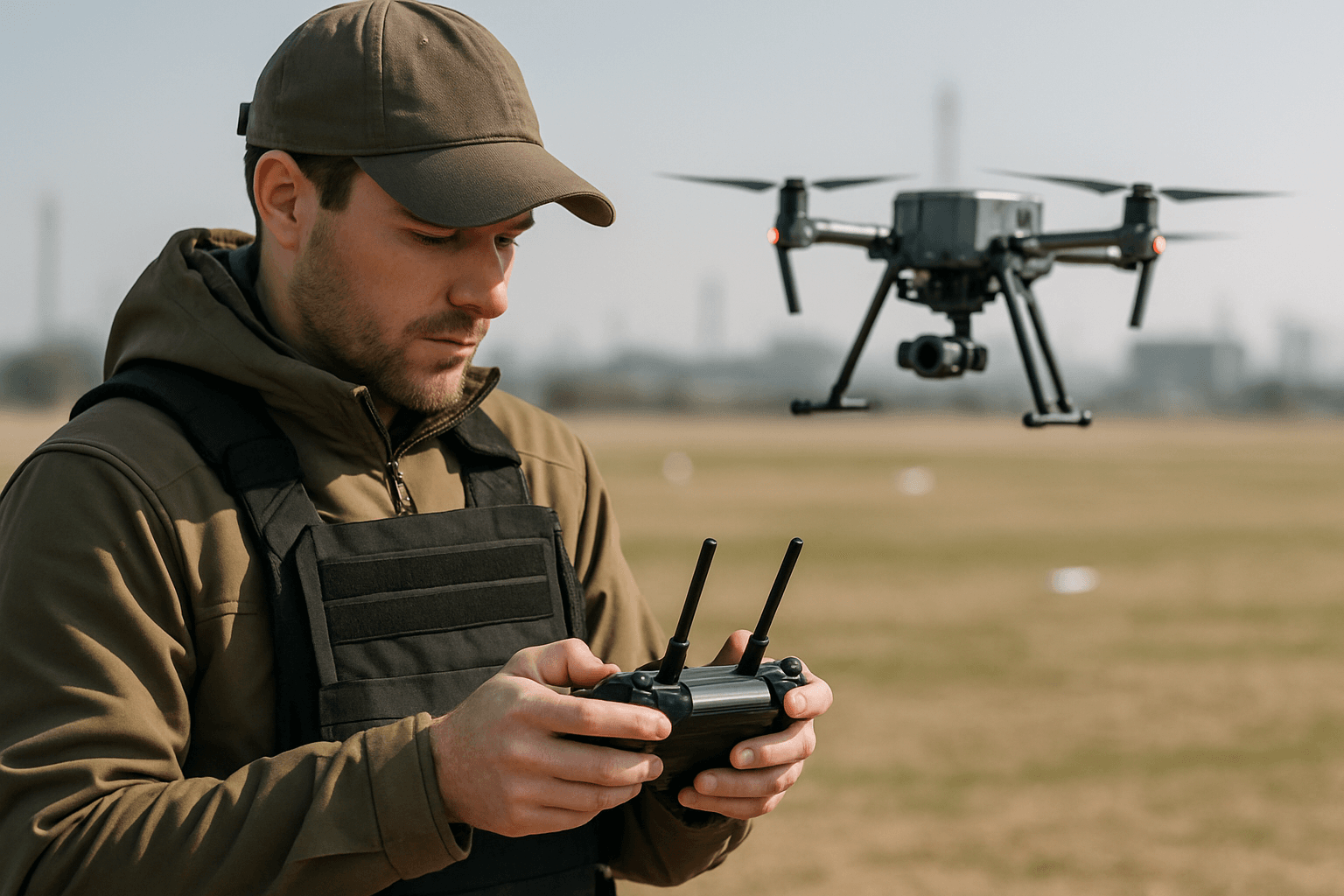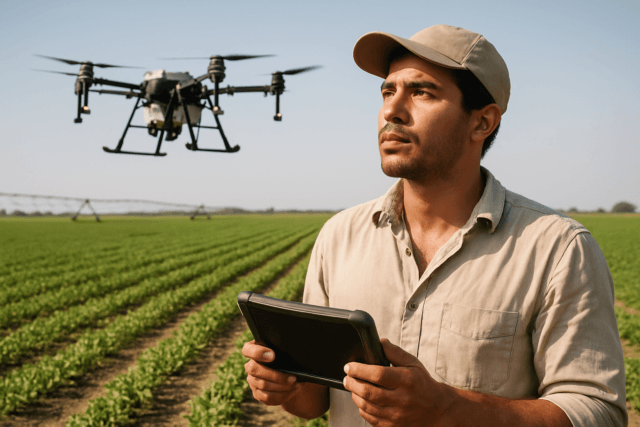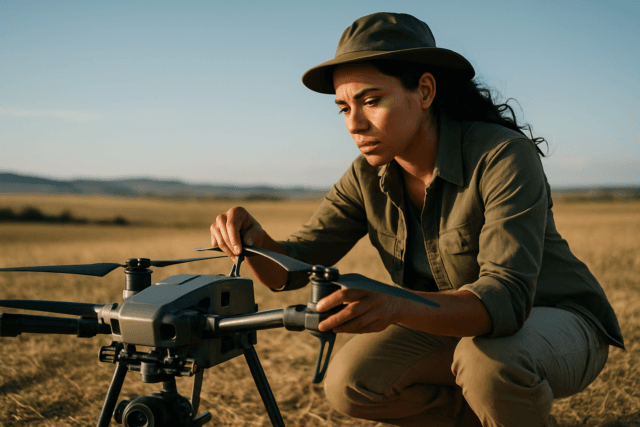The increasing integration of Unmanned Aerial Vehicles (UAVs), commonly known as drones, into modern security operations necessitates specialized training and comprehensive certification for pilots. As drones become indispensable tools for surveillance, perimeter monitoring, incident response, and critical infrastructure protection, ensuring their safe, legal, and effective operation is paramount. This requires adherence to regulatory frameworks established by aviation authorities and the acquisition of advanced skills beyond basic flight proficiency.
The Evolving Landscape of Security Drones
The deployment of drones in security contexts has rapidly expanded due to their ability to provide real-time aerial situational awareness, reduce human risk in hazardous environments, and enhance response times. From supporting law enforcement in active shooter situations and search and rescue missions to monitoring large events and industrial sites, drones offer a unique vantage point and data collection capabilities that traditional security measures often cannot match.
Role of Drones in Modern Security
Drones in modern security operations are utilized for various critical tasks:
- Perimeter Monitoring: Automated patrols and anomaly detection to secure boundaries.
- Event Surveillance: Overhead views for crowd control, traffic management, and incident observation at large gatherings.
- Critical Infrastructure Protection: Inspection and monitoring of vital facilities like power plants, transportation networks, and communication hubs.
- Incident Response: Providing real-time intelligence for fire, EMS, law enforcement, and search and rescue operations.
- Reconnaissance and Overwatch: Gaining immediate visibility in dangerous or inaccessible areas before human entry.
Regulatory Bodies and Frameworks
The operation of drones, particularly for commercial or public safety purposes, is governed by national and international aviation authorities. These bodies establish rules to ensure airspace safety, security, and privacy. Key regulatory entities include:
- United States: The Federal Aviation Administration (FAA).
- European Union: The European Union Aviation Safety Agency (EASA).
- United Kingdom: The Civil Aviation Authority (CAA).
These authorities categorize drone operations based on risk levels (e.g., Open, Specific, Certified in EASA; Part 107 for commercial/public safety in the FAA) and mandate specific pilot competencies and aircraft registration.
Foundational Training for Security Drone Pilots
Regardless of the specific security application, all drone pilots must acquire foundational knowledge and practical skills. This typically begins with obtaining a basic commercial drone pilot certification.
General Drone Pilot Certification
In the United States, commercial drone operations (including security and public safety) require the FAA Remote Pilot Certificate, often referred to as the Part 107 license. To obtain this, an applicant must:
- Be at least 16 years old.
- Be able to read, speak, write, and understand English.
- Be in a physical and mental condition to safely fly a drone.
- Pass the “Unmanned Aircraft General – Small (UAG)” aeronautical knowledge test at an FAA-approved knowledge testing center.
- Complete an online application and pass a TSA background check.
For public safety agencies, the FAA also offers Certificates of Authorization (COA) which grant additional privileges, such as flying at night or in restricted airspace, beyond the standard Part 107 rules.
In the European Union, EASA regulations classify drone operations into Open, Specific, and Certified categories based on risk. For commercial operations, remote pilots must complete online training, pass an exam, and obtain a valid remote pilot competency certificate. All drones weighing over 250 grams or equipped with a camera must be registered, and operators must place their unique operator ID on all drones they own.
In the United Kingdom, commercial drone operations typically fall under the Specific Category, requiring an Operational Authorization (OA) from the CAA, which in turn necessitates a General Visual Line of Sight Certificate (GVC). The CAA also has regulations on drone product requirements, Flyer ID training, and Direct Remote ID implementation to enhance safety and security. As of 2025, mandatory Remote ID is proposed for all drones over 100 grams flown in the UK.
Aeronautical Knowledge and Safety
The foundational knowledge for drone pilots covers a broad range of topics essential for safe and compliant operations. This includes:
- Applicable regulations and operating requirements.
- Airspace classification and flight restrictions.
- Aviation weather sources and their effects on drone performance.
- Small unmanned aircraft loading and performance.
- Emergency procedures.
- Crew resource management and aeronautical decision-making.
- Airport operations and radio communication procedures.
- Maintenance and pre-flight inspection procedures.
Practical Flight Skills
Beyond theoretical knowledge, practical flight proficiency is crucial. Training programs often include hands-on flight time with various drone platforms, emphasizing safe operation, flight management software, and UAV software settings. Practical tests, such as the National Institute of Standards and Technology (NIST) Aerial Test, are sometimes used to assess a pilot’s proficiency.
Specialized Training for Security Operations
While general certification provides the basics, operating drones in security and surveillance roles demands highly specialized training modules that address the unique challenges and requirements of such missions.
Surveillance Techniques and Tactics
Security drone pilots need to master specific techniques for effective surveillance, including:
- Remote surveillance methods.
- Following targets and maintaining observation.
- Crowd control and event monitoring strategies.
- Tactical flight operations overview and mission planning.
Data Collection and Analysis
Drones in security are primarily data collection platforms. Pilots must understand how to:
- Operate high-resolution RGB and thermal cameras.
- Manage and secure collected imagery and video.
- Integrate drone data with existing security networks and control centers.
- Utilize AI-powered analytics for motion and object recognition, anomaly detection, and predictive threat analysis.
Night Operations and Thermal Imaging
Many security incidents occur in low-light conditions. Specialized training covers:
- Safe night flight procedures, often requiring specific waivers or authorizations (e.g., FAA COA).
- Effective use of thermal imaging cameras for detection in darkness or through smoke/fog.
Emergency Procedures and Incident Response
Security operations can be dynamic and unpredictable. Training includes:
- Emergency response skills for various scenarios.
- Protocols for incident reporting and response.
- Safe and immediate cessation of flight near emergency incidents unless authorized by emergency services.
- Understanding how drones integrate with first responder teams.
Legal and Ethical Considerations in Security Operations
Operating drones for security raises significant legal and ethical questions, particularly concerning privacy. Training must cover:
- Privacy laws and restrictions on unauthorized surveillance of private properties or individuals.
- Data protection and privacy standards, such as those guided by the Aerospace Industries Association’s NAS9948 or the EU’s NIS2 Directive and Cyber Resilience Act.
- Ethical deployment practices and avoiding misuse of surveillance capabilities.
- Understanding the legal framework for using drones in law enforcement and private security.
Cybersecurity for UAVs
Given the sensitive nature of security data, cybersecurity is a critical training component. This includes:
- Understanding vulnerabilities and implementing robust threat detection.
- Securing data-at-rest and data-in-transit.
- Ensuring supply chain integrity for drone components.
- Awareness of standards like NIST 800-53 Rev 5 and proposed legislation like the DETECT Act, which aims to develop cybersecurity guidelines for civilian drones.
Industry-Specific Certifications and Best Practices
Beyond general and specialized pilot training, specific industries and applications may require additional certifications or adherence to best practices.
Vendor-Specific Training
Many advanced security drones come with proprietary software and hardware. Training programs often incorporate instruction on specific platforms (e.g., DJI Matrice series) and their unique functionalities, such as AI tracking, autonomous patrol planning, and seamless integration with existing security systems.
Advanced Security Certifications
Some courses offer advanced certifications for roles such as “Security Pilot” or “Surveillance Drone Pilot,” which focus on intelligence, overwatch, reconnaissance, and specific security mission types. Certain programs also combine drone pilot qualifications with traditional security licenses, such as the SIA Security Guard license in the UK, creating dual-qualified professionals for the modern security industry.
Importance of Continuing Professional Development
The drone and security industries are rapidly evolving. Continuous professional development is essential to stay updated on new technologies, changing regulations, and emerging threats. This includes recurrent training, participation in industry conferences, and engagement with professional organizations like DRONERESPONDERS or LEDA (Law Enforcement Drone Association).
Navigating International Regulations
While core principles are similar, specific requirements vary significantly by region.
United States (FAA)
The FAA Part 107 Remote Pilot Certificate is the baseline for commercial and public safety drone operations. Public safety agencies may also operate under a Certificate of Authorization (COA) for expanded privileges. Drones weighing over 250 grams must be registered with the FAA.
European Union (EASA)
EASA provides a unified framework across member states, categorizing operations by risk (Open, Specific, Certified). Pilots require specific training and competency certificates depending on the category. Registration of operators (and potentially drones) is mandatory for most commercial uses. Cybersecurity regulations like NIS2 and the Cyber Resilience Act are increasingly impacting drones used in critical infrastructure.
United Kingdom (CAA)
The UK CAA largely aligns with EASA principles, with its own specific implementation, including the GVC for Operational Authorisation and A2 CofC for certain operations. The CAA is continuously updating its regulations, with proposed changes for 2026 onwards including mandatory Remote ID for drones over 100g with a camera, and clearer classification of airspace for simpler understanding (e.g., A1: flying over people, A2: flying near people, A3: flying far from people).
Other Jurisdictions
Many other countries have their own civil aviation authorities (e.g., DGCA in India, SACAA in South Africa) that regulate drone operations. These often include requirements for remote pilot licenses, specific training hours, and adherence to local airspace and safety rules. Some countries, like Australia, are still developing specific cybersecurity regulations for UAVs, though general aviation and critical infrastructure cybersecurity guidelines may apply.
The Future of Security Drone Training
The future of security drone operations will likely involve further technological advancements and increasingly complex regulatory landscapes.
Integration of AI and Automation
AI is already enhancing security drones with capabilities like autonomous navigation, object recognition, anomaly detection, and predictive threat analysis. Future training will need to focus on managing and leveraging these AI capabilities, including understanding AI-driven route planning, real-time data processing, and integration with existing security systems.
Advanced Counter-Drone Measures
As drone use expands, so does the need for counter-drone technologies to mitigate malicious or unauthorized drone activity. Training for security professionals may soon include understanding and operating counter-UAS systems.
Specialized Verticals within Security
Further specialization in training will emerge for niche security applications, such as large-scale event security, critical infrastructure protection, border patrol, or anti-poaching operations, each requiring tailored skills and certifications. The ongoing development of industry standards, such as those from UL Solutions (e.g., UL 3030 for commercial drones) and the Aerospace Industries Association, will continue to shape certification requirements for security drone systems themselves, encompassing aspects from electrical safety to cybersecurity.





